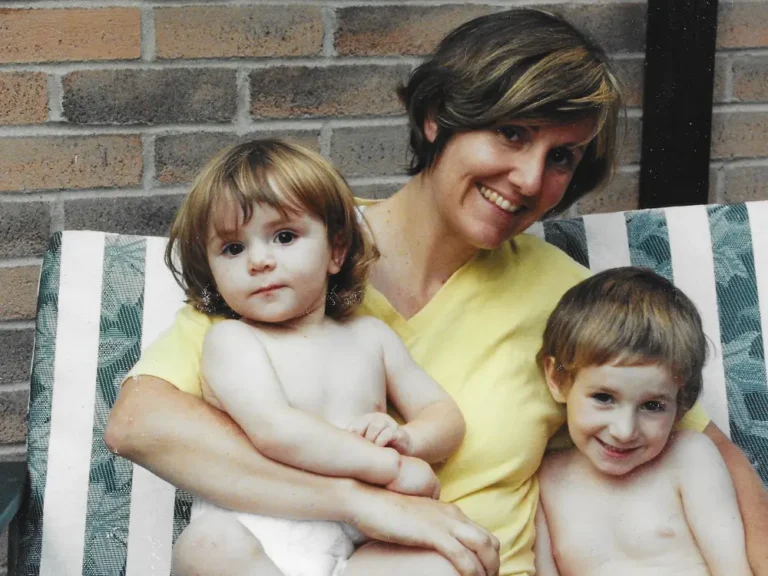What is the best comedy sketch of all time? Keegan-Michael Key and Elle Key have an answer

CHICAGO (AP) — This isn’t meant to be answered definitively, but consider this for a moment:
What is the most memorable comedy sketch of all time?
Abbott and Costello, Monty Python, “Saturday Night Live,” “Portlandia,” “Chappelle’s Show.” There is no authoritative body on the subject, not even a Rolling Stone-style comedy magazine. But there’s a clever married comedy couple, Elle Key and Keegan-Michael Key, actor (him) and producer (her), who are now co-authors of a slim, conversational book called “The History of Sketch Comedy.” And by the end of that history, they are attempting to answer this question, which requires them to travel through Chicago.
Key and Key’s selection? “The Audition,” by Bob Odenkirk and David Cross, from HBO’s influential ’90s series “Mr. Show.” Cross auditions for Odenkirk and Dino Stamatopoulos and requests to perform a monologue titled “The Audition.” The issue is that whenever he appears to address Odenkirk and Stamatopoulos, they politely respond, and Cross must stop — no, no, that’s part of his monologue. Ahh … OK, start over. However, as Cross’ monologue becomes increasingly enraged — “Someone answer me! Don’t look each other in the eyes! “Take a look at me!” — Odenkirk and Stamatopoulos squirm, unsure whether they should respond to this auditioning actor by pretending — perhaps? — to be in an audition.
Keegan describes the sketch as the “pinnacle of sketch… my turducken” in their book. They explained on the phone recently, ahead of Key and Key’s appearance at the Chicago Humanities Festival, that sketch is “everything you should do,” Elle said. It builds in intensity, is based on improv’s yes-anding, and has an unexpected ending.
They also agree.
In fact, talking about comedy with Key and Key can sound a little like a sketch:
“So you both agree on comedy and what the history of comedy should look like?”
“There was a moment when Keegan was presenting at an award show and I wrote him something and had him stop for laughs — he was on video, waiting for the audience’s reaction as if it were live — and he did fight me on that, because he did not think it would get the laugh I knew he would get,” Elle says. But I can’t recall another time when we disagreed…”
Keegan: “Neither can I.”
She said, “See, he can’t disagree with me now.”
They’ve been together for five years. He is from Detroit, and she is from New York City. They spoke from New York, where Elle described her husband, saying, “Keegan jaywalked today.” That, in my opinion, is enormous. I can count the number of times he’s jaywalked in New York City on one hand, and I don’t think he’d do it if I wasn’t with him.”
Keegan, who is half of the sketch comedy duo Key & Peele, maintains a proper, formal bearing in everyday life that serves his sketch characters well. He knows instinctively where a sketch needs to go off the rails and where it needs to be quiet. He rose through the Second City ecosystem, first in its Detroit satellite troupe, then in Chicago’s e.t.c. cast. “There was definitely a difference of styles,” he added. “The Detroit stage was extremely physical and raw, and the Chicago stage was much more heady.” That was my experience when I first arrived in Detroit. Someone in Chicago told me that for a long time, the majority of people in the audience there came from the 60614 ZIP code. They’d been taught to watch this type of sketch. There is more tourism now. Because there was no educated improv or sketch audience in Detroit, we were most successful when we did big physical humor or marriage humor. You could get away with experimenting in Chicago.”
Physical chaos is no less finely tuned.
I asked him what the best sketch shows are right now, and he said without hesitation: HBO’s “Black Lady Sketch Show” — whose breakout Robin Thede went through Northwestern University and then Second City — and Netflix’s “I Think You Should Leave,” co-created by Detroit native and Chicago Second City star Tim Robinson. The latter, in particular, “strikes me as a direct descendant of the Marx Brothers,” according to Keegan. “I imagine Harpo pulling things out of a coat that wouldn’t have existed in a coat, and Tim does the same thing with minutiae.” He discovers something that 99% of humanity would abandon, and that is what his characters focus on. That’s how the Marx Brothers operated. They would put an end to a madmen plot, no matter how improbable it was. My favorite moments are when they pause to enjoy a joke they just told. That would never happen in a modern film, but Tim does. He enjoys obsessing over trivial matters.”
Throughout the book, Key and Key admire chaos, the kind that goes well with another sketch hallmark: one-upmanship. A few examples from the book include Carol Burnett and Lucille Ball as rival car salespeople, Monty Python’s legendary parrot sketch, and a great “Kids in the Hall” routine in which two friends have lunch and one tries to remember the name of the movie he saw the night before, which is obviously “Citizen Kane.” (“No, that’s not it,” Dave Foley responds to any mention of “Citizen Kane.”)
“Key & Peele,” the phenomenal sketch comedy show Keegan created with Jordan Peele for five seasons on Comedy Central, reveled in this type of gamesmanship, raising the stakes, raising the stakes, raising the stakes. Elle and Keegan enjoy discussing the math behind such sketches. “How you start at 6 and bring it to 412,” she explained. Some sketches, the scenario will grow so large that someone will have to blow up.”
“I have been in some of those,” Keegan admitted.
“Wait, you have?” Elle stated.
“The valets in ‘Key & Peele,’ they self-immolate.” They become engrossed.”
Don’t forget about the one with the burger at the BBQ, I said.
“Burger?” Keegan inquired.
You’re hovering over Peele, telling him to flip the burger and avoid using cheese…
“Oh! The Kobe beef parody.”
“Right — ‘This meat traveled all the way across the Pacific!'” ‘On the water!'”
“That came from my point of view, only heightened,” Keegan went on to say. “I wouldn’t bring Kobe beef to a cookout in real life.” But what would be the worst that could happen if I did? It would end up in the hands of someone who would not stand behind the product! Why would I want you to prepare my food? ‘You are not deserving! You are not deserving!’ That’s who I am.”
One-upmanship and ego are so ingrained in vintage sketches that even sketches about less myopic subjects are still about one-upmanship. The “Key & Peele” slave auction sketch, in which two slaves, played by Key and Peele, become enraged that they are not selling, is really about “vanity,” Elle explained. “Everyone calls it the slave sketch,” Keegan continued, “but that’s only one angle.” Jordan is sitting in his apartment, thinking to himself, ‘How can I make someone laugh at this?'” Similarly, in their racist zombie sketch, Key and Peele, who are survivors of a zombie apocalypse, pick up on undead microaggressions. “You have to be willing to say, ‘I’m not just going to be contrarian for shock value, but locate a kernel to exploit — then heighten, heighten…” said Keegan.
In an age of social media, patience in sketch comedy can feel archaic. When a “Key & Peele” or “SNL” or SCTV classic appears on my TikTok or Instagram feed these days, it’s almost always drained of context and chopped up so much that the comedy doesn’t have room to shine. Chaos does not have to appear. It is already present.
The “DMV Theater,” as Key and Key refer to it, is a mixed bag: Sketch comedy is so popular on the internet that it’s thriving. Nonetheless, it is consumed on the go, in brief bursts of boredom.
“Kevin Nealon told us in the book that his son will watch ‘SNL’ sketches on YouTube but check the time stamp first,” Keegan went on to say. “I find it fascinating how older sketches wait for the setup.” They’re on the boil. You could have two minutes before the comedy begins.
“(‘Key & Peele’) never imagined it would be available online someday.” We planned sketches to live together. We had no idea they’d be segmented out. “The episodes were like albums, with a movement to the show and one thing leading into the next for a reason.”
Python, I claimed, was the first to do so.
“Yes,” he confirmed. “You ever heard the theory that every episode of that series was a dream in the head of a man named Monty Python?” You had these bizarre sketches flowing — literally — and now you’re doing something completely different. It’s how we fantasize. It’s probably apocryphal, but I like it.”






